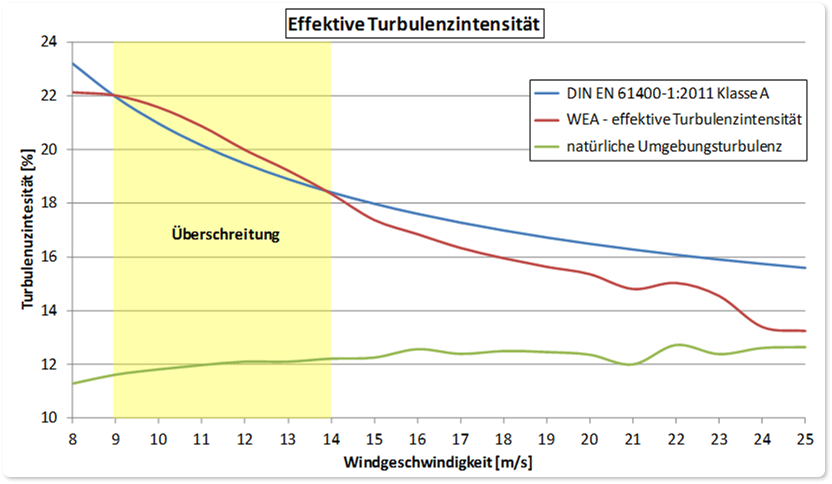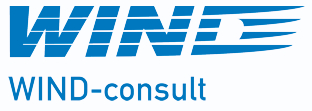Contact:
Dipl.-Geoök. S. Müller
Dipl.-Phys. T. Twardzik
The determination of ambient turbulence intensity at a site as well as effective turbulence intensity within a wind farm are carried out in accordance to DIN EN 61400‑1 (correspond to IEC 61400‑1) and guidelines for wind turbines published by DIBt. The results are used to ensure the system integrity in terms of loads and life-time of WT with respect to the design requirements.

PROCEDURE
The estimation of ambient turbulence intensity at a site as well as effective turbulence intensity within a wind farm is carried out using wind data, statistical methods and modeling. WIND-consult considers the state-of-the-art national and international guidelines and standards like e.g.
- the DIBt guideline,
- the DIN EN 61400-1,
- the Mindeststandards zur Dokumentation von Gutachten zur Ermittlung der Umgebungsturbulenzintensität and
- the MEASNET guideline evaluation of site specific wind conditions.
The models used for the estimation are the validated and approved model WAsP Engineering as well as WindPRO. The main input data are the topography, the roughness, obstacles and representative wind data.
RANGE OF ACTIVITIES
- Inspection of the site, its surroundings
- Complexity check of the planned sites
- Determination of the wind field parameter for different heights at a site in a wind farm
- Determination of extreme wind speed (50 year return period) at the sites in hub height with respect to the design requirements of wind turbine
- Determination of ambient turbulence intensity as well as its standard deviation at a site in the wind farm
- Determination of effective turbulence intensity at the sites in hub height with respect to the design requirements of wind turbine
- Determination of sectoral shutdown or load reduced modes in order to keep the limit of the design parameters of wind turbines (sector management).
